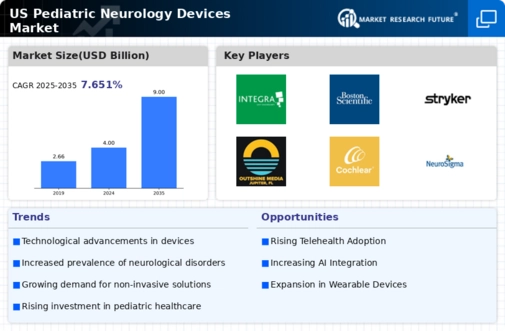The US Pediatric Neurology Devices Market is characterized by a rapidly evolving landscape marked by advancements in technology, a focus on patient-centric solutions, and the increasing prevalence of neurological disorders. Competition within this market is fierce, driven by the need for innovative treatments and diagnostic tools that can improve patient outcomes. Companies are fostering collaborations with healthcare providers and engaging in strategic partnerships to enhance their market positions. Key factors influencing this competition include the regulatory environment, reimbursement policies, and ongoing research and development initiatives aimed at addressing unmet medical needs.
Market stakeholders are also paying attention to shifting consumer preferences towards minimally invasive procedures and the integration of digital health technologies, which significantly impact product development and marketing strategies.
Integra LifeSciences has established a significant presence within the US Pediatric Neurology Devices Market, leveraging its extensive expertise in neurosurgery and neurocritical care. Known for its innovative neurocritical care solutions and surgical products, Integra LifeSciences has focused on developing high-quality devices that enhance surgical precision and safety. The company’s strength lies in its strong research and development pipeline, which enables it to introduce cutting-edge products that align with evolving clinical practices.
Furthermore, the robust distribution network and committed customer service have solidified its position in the market, allowing Integra LifeSciences to respond effectively to the needs of healthcare professionals and institutions across the United States.
TheraNest operates within the US Pediatric Neurology Devices Market, offering a range of products and services aimed at improving clinical efficiency in mental health and neurological therapy settings. The company focuses on providing robust solutions that enhance data management and treatment accessibility for practitioners. TheraNest's key offerings include software solutions designed to streamline patient management and documentation, reflecting its commitment to supporting healthcare providers in delivering efficient care. The company has strengthened its market presence through strategic partnerships and acquisitions that allow it to expand its portfolio and enhance service delivery.
TheraNest’s emphasis on user-friendly technology and integration capabilities has positioned it well amidst its competitors, making it a noteworthy entity in the realm of neurological devices tailored for the US market.





















Leave a Comment